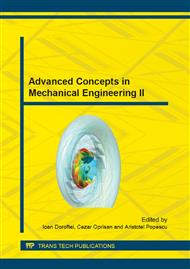p.256
p.262
p.268
p.274
p.283
p.289
p.295
p.301
p.307
Straight Section Influence on Thermal and Hydraulic Performances for a Wavy Air Fin in a Compact Heat Exchanger
Abstract:
The air cooled heat exchangers are used on a wide range of automotive, construction, industrial or agriculture applications. As the atmospheric air has the lowest convective heat transfer coefficient it is necessary to use different extended surfaces with different geometries. The need for this type of heat exchanger and the relative limited information in the literature, conducted to a study, done at RAAL S.A. Company in collaboration with University “Politehnica” of Timișoara that focuses on finding the optimum length of the straight section depending on the cooler thickness and wavy fin pitch. In the first step we performed analytical investigations on a multiple number of core thickness dimensions, for 5 mm fin pitch. The optimum length of this straight section is considered the section for which the fins that have the highest area goodness factor (J/f). The above numerical study then was to be confirmed in the second step by real life testing. The scope of this study was to determine a relation that shows the influence of the straight fin section on the thermal and hydraulic performances.
Info:
Periodical:
Pages:
283-288
Citation:
Online since:
October 2014
Authors:
Price:
Сopyright:
© 2014 Trans Tech Publications Ltd. All Rights Reserved
Share:
Citation:


